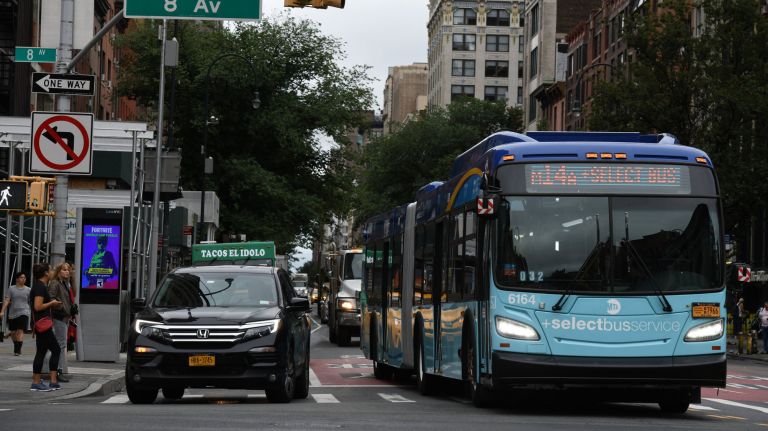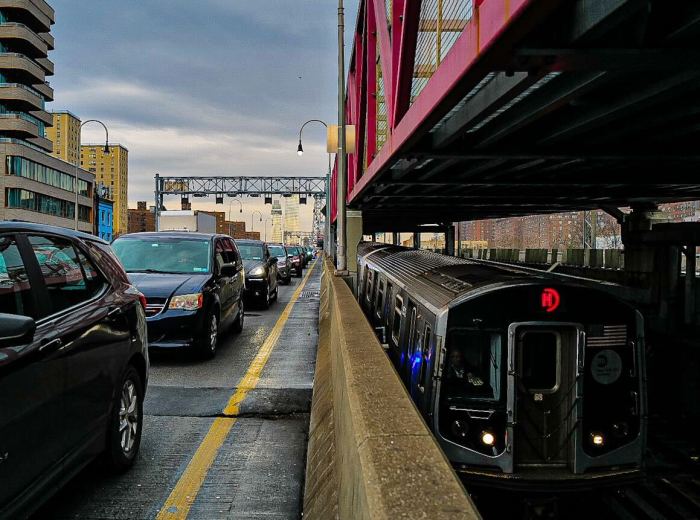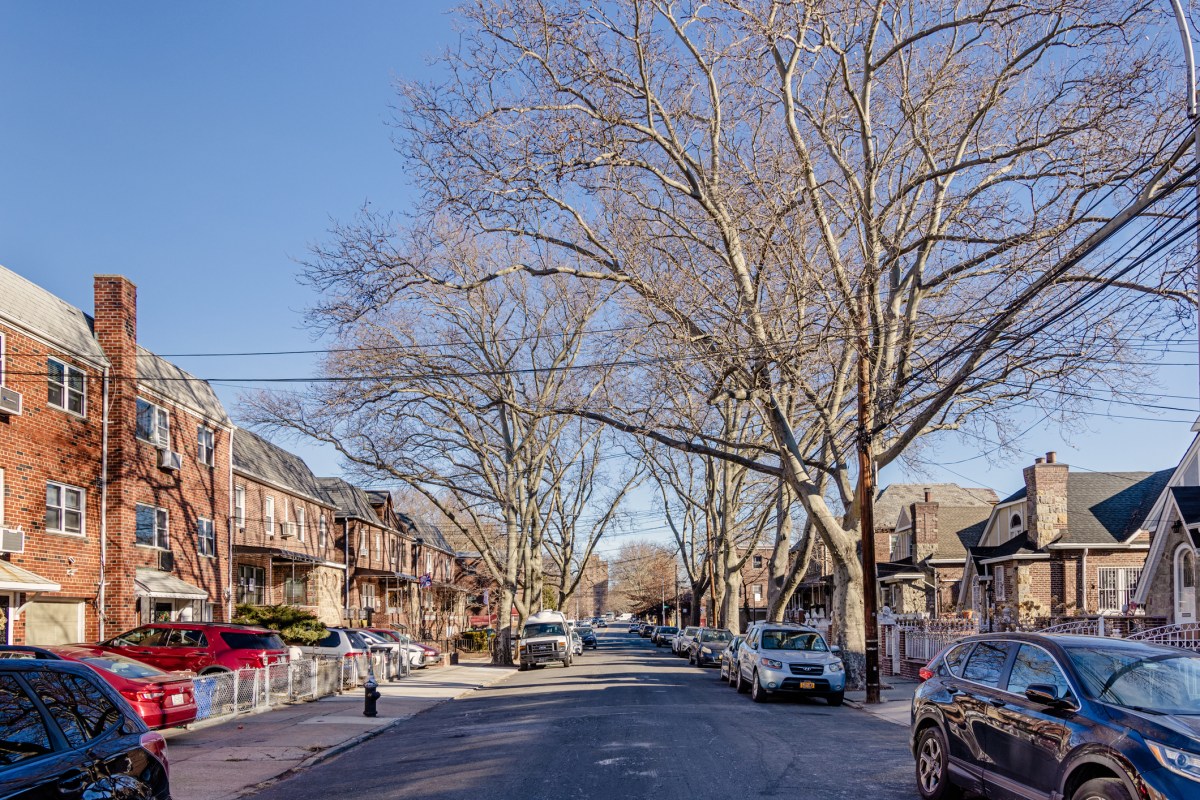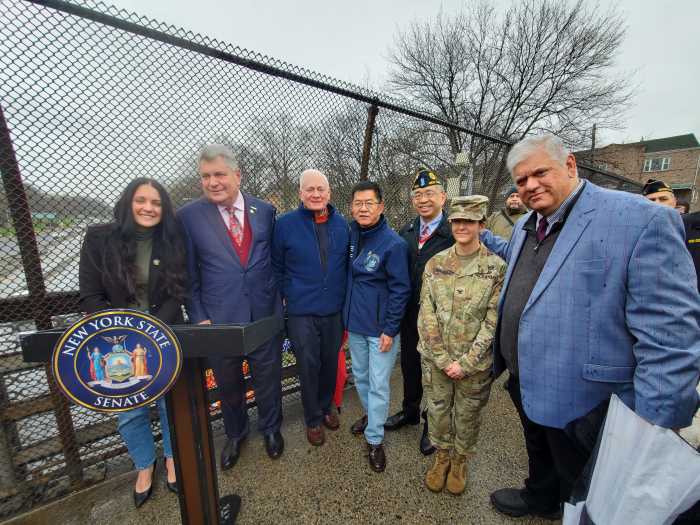With speeds and ridership increasing, the MTA hopes to add service to the 14th Street Busway in Manhattan, officials said Wednesday.
But first, the MTA will look to increase enforcement of the bus lane rules along the six-block stretch of 14th Street between Third and Ninth Avenues.
Craig Cipriano, MTA Transit senior vice president for buses, said current scheduling of M14 Select Bus Service is meeting commuter demand. But additional buses could be deployed if more commuters keep riding along 14th Street, where the city has piloted its busway to ban private vehicles most of the day.
“In the future, as these buses continue to speed up, we can add more trips back—even using the existing equipment and existing number of bus operators we use today. but for sure if ridership comes to a point where we need to increase service then we would,” Cipriano said during a Union Square news conference on Nov. 20.
“On any route where service is needed based on customer demand we will look to increase service there—absolutely,” he continued.
The M14 saw 32,536 average weekday riders between Nov. 1 and Nov. 17 following the route’s upgrade with more space on the street and off-board fare collection through the busway pilot, according to the MTA. That’s up 22% from the route’s 2018 average daily ridership of 26,637.
At the same time, M14 travel times have decreased 38%, from nearly 17 minutes to 10.3 minutes, when comparing bus service through this November to the same period last year, per MTA data.
“These numbers are proof that when you deliver tangible service improvements, people respond. They’re showing the busway was the right decision,” said Ben Fried, spokesman at the advocacy group TransitCenter, which recently issued report cards on MTA and city agencies’ efforts to improve bus speeds.
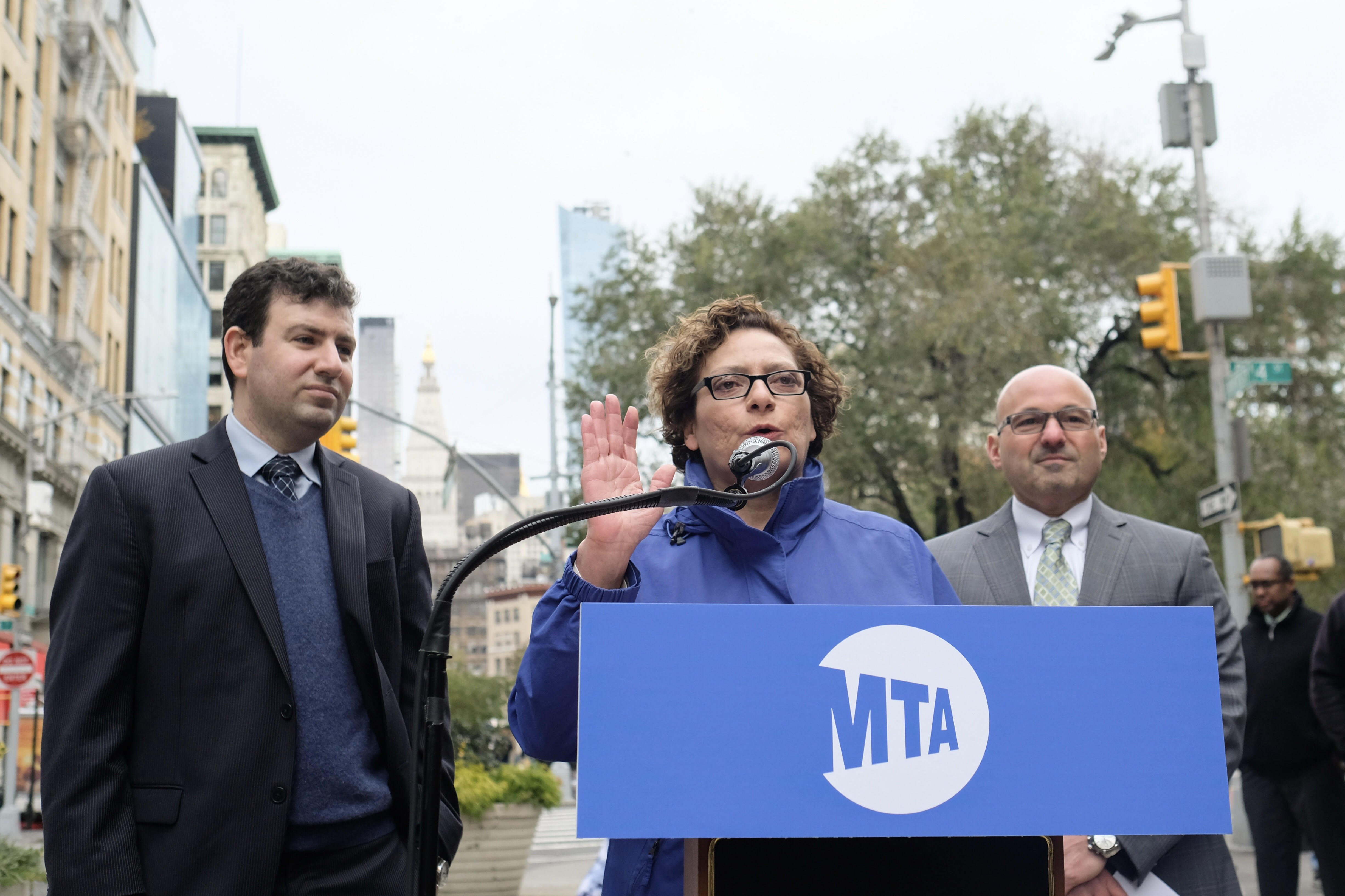
Under the current busway pilot, launched Oct. 3, drivers making pick-ups or drop-offs are allowed on the street but must keep the bus lanes clear and make their next available right turn off the roadway.
Riders will start getting extra muscle to enforce the rules starting Monday, Dec. 2, when the city will begin issuing tickets from its stationary bus lane cameras to vehicles caught driving, parking or standing in the bus lane.
The MTA will soon double up on automated enforcement with a new camera program of its own. Starting Thursday, Nov. 21, the MTA will begin operating front-facing cameras on its buses. Those cameras will issue warnings to violators during a 60-day grace period before ticketing begins.
Tickets start at $50 and increase by $50 for every offense documented in a 12-month period, up to $250.
“The idea is to keep these bus lanes—for what purpose?—dedicated for our buses,” said outgoing MTA managing director Ronnie Hakim, who described the bus-mounted cameras as “state of the art.”
“We’re really getting our improvements in place to benefit our customers and to benefit traversing 14th Street,” she added.
If drivers are captured blocking the bus lane in the same location by two successive buses, they will be ticketed through the MTA’s new enforcement system. there are currently 123 buses deployed along three routes using the bus-mounted cameras and the MTA has plans to expand their use in its next, still unfunded capital plan through 2024.
The MTA and DOT have so far relied on a team of 16 NYPD traffic officers to enforce the busway, some of whom could be heard from the news conference at the corner of University Place, where they repeatedly blew whistles and frantically flagged down vehicles that did not turn right off the corridor.
Photos circulated on Twitter over the weekend appeared to show a traffic-clogged 14th Street due to a lack of traffic officers. Officials Wednesday assured those officers would remain deployed for the time being.
“The commitment from the city and the commitment from the Police Department is to continue staffing personnel on the street as long as is needed,” said Eric Beaton, the city Department of Transportation’s deputy commissioner.
“Staffing has been reduced somewhat but there are still absolutely agents who are out both helping direct traffic and issuing violations,” Beaton continued.
While Hakim at the MTA heralded the busway as a “remarkable success” for riders, several local residents interrupted her, shouting that the nearby 12th and 13th streets have become traffic-clogged messes.
Last month, an independent transportation analytics firm INRIX studied those streets and found that there was “no discernible performance changes to neighboring roads” as a result of the busway.
But Michael Certo, who lives on 13th Street, said that was “impossible.”
“You can see the videos of cars backed up all day—7:30 in the morning to 9 o’clock at night,” said Certo, who added that he doesn’t drive and that he believes the city could smooth out the problem not by removing the busway but by making certain tweaks to street designs.
Beaton at the DOT said the city would continue to measure volumes on side streets as the pilot continues, but that anecdotally it hasn’t noticed a dramatic change.
“That’s not to say that traffic is fast,” Beaton said, “but we think it has not changed substantially from what it was before.”



